Where to Eat Megrelian Cuisine in Tbilisi: Oro Restaurant Review
6 min readThe cuisine of Samegrelo Region in Western Georgia is without parallel. From adjika – a fiery paste or rub traditionally used to ward off subtropical disease – to gebzhalia – a cooling dish of cheese, matsoni and mint, the Megrelian kitchen is one of the richest in the region.
As a huge fan of Samegrelo, its biggest city, Zugdidi, and of course its food (do a search for ‘kharcho’ in my Tbilisi Restaurant Guide and you will see how frequently I mention it!), I am always on the lookout for new Megrelian venues to try. Recently I was introduced to an established restaurant that I had overlooked until now.
Created by the team behind Strada, Oro is an outpost for refined Megrelian dining in Tbilisi. Oro fuses traditional family recipes and farm-sourced ingredients with fine-dining presentation, considered service, and an exceptional ambiance. It has all the ingredients for a first-class dining experience.
This review was created in partnership with Oro. As always, all opinions, recommendations and criticisms are 100% my own.
Please note: This post contains affiliate links, meaning I may earn a commission if you make a purchase by clicking a link (at no extra cost to you). Learn more.
The setting
Oro’s flagship location (they also have a second restaurant in Saburtalo) sits opposite Kote Marjanishvili’s Theatre, a short walk from Marjanishvili Metro Station on Tbilisi’s Left Embankment. References to the Art Nouveau theatre – completed in 1909 by Russian-Polish architect Stefan Kryczynski – and the nearby Economic Association of Officers House (now TBC Bank) reverberate through Oro’s dining room.
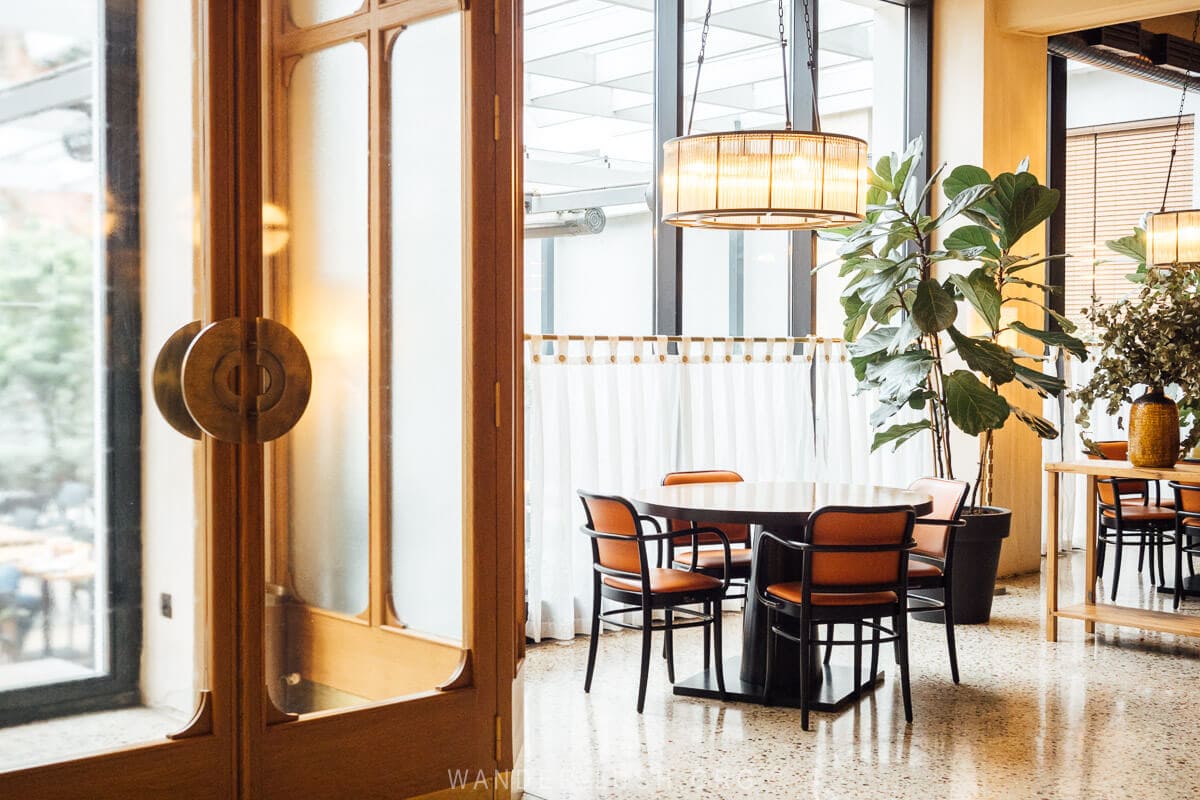
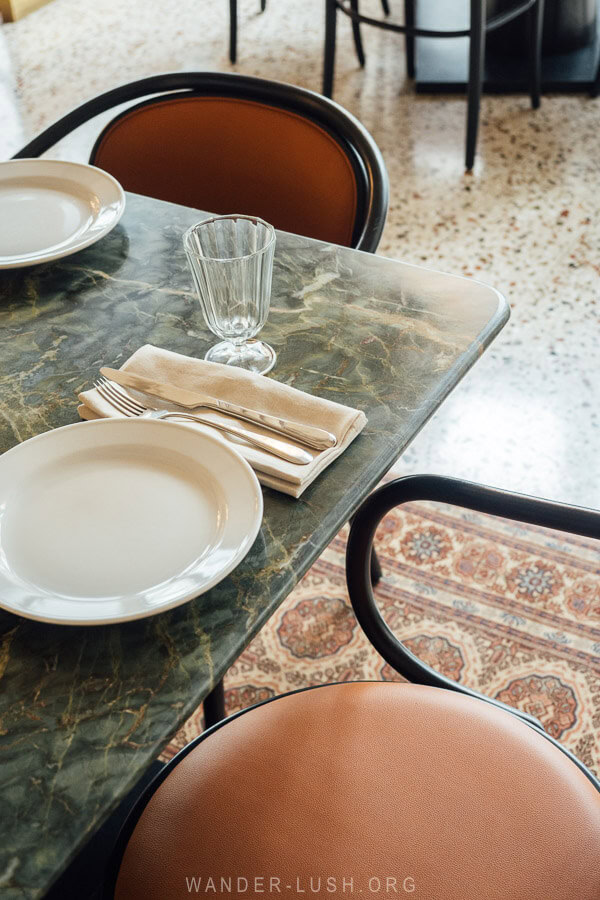
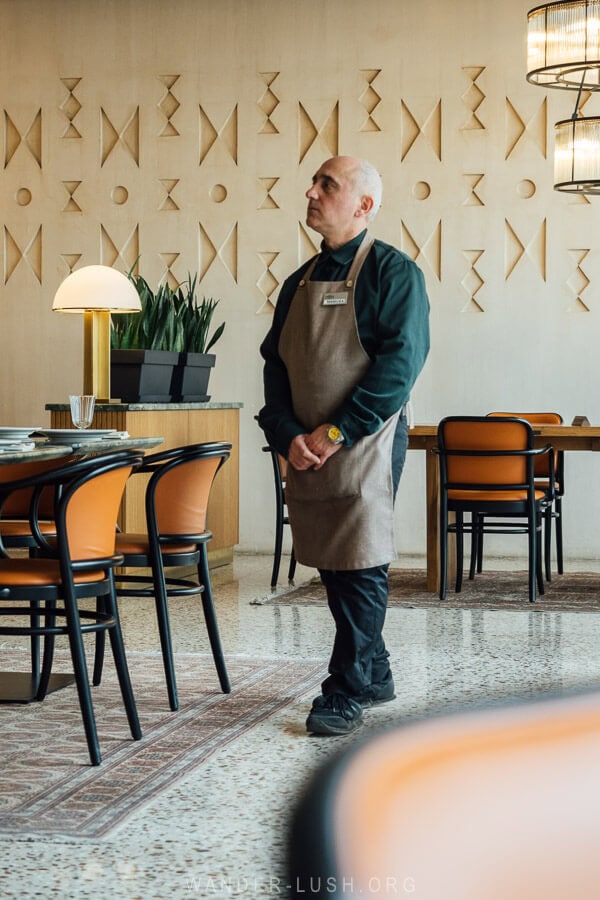
Shared with Strada and several other cafes and restaurants, Oro’s building was once a printing house. On your way in, note the old Karl Krause book press machine, preserved in a nook in the brick wall and draped in creeping ivy in spring.
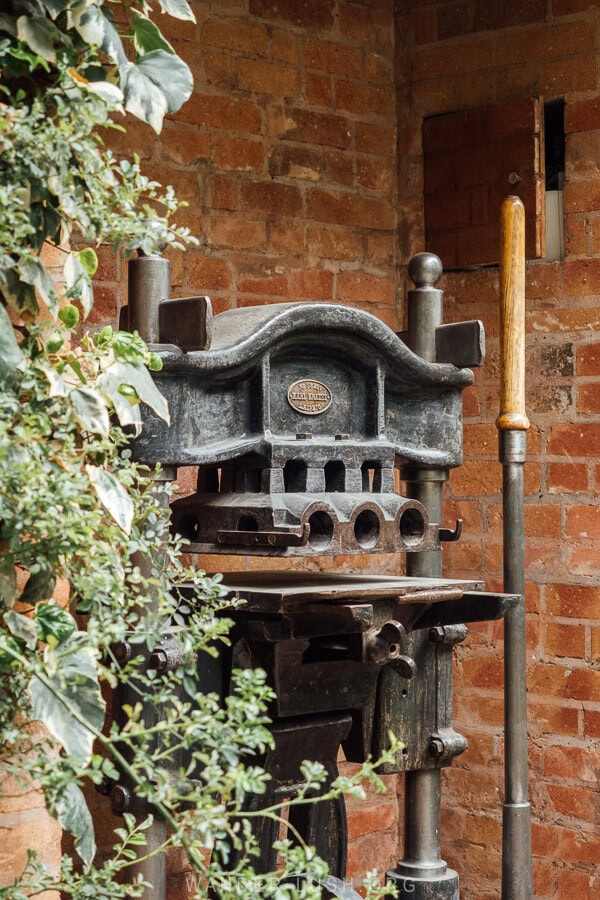
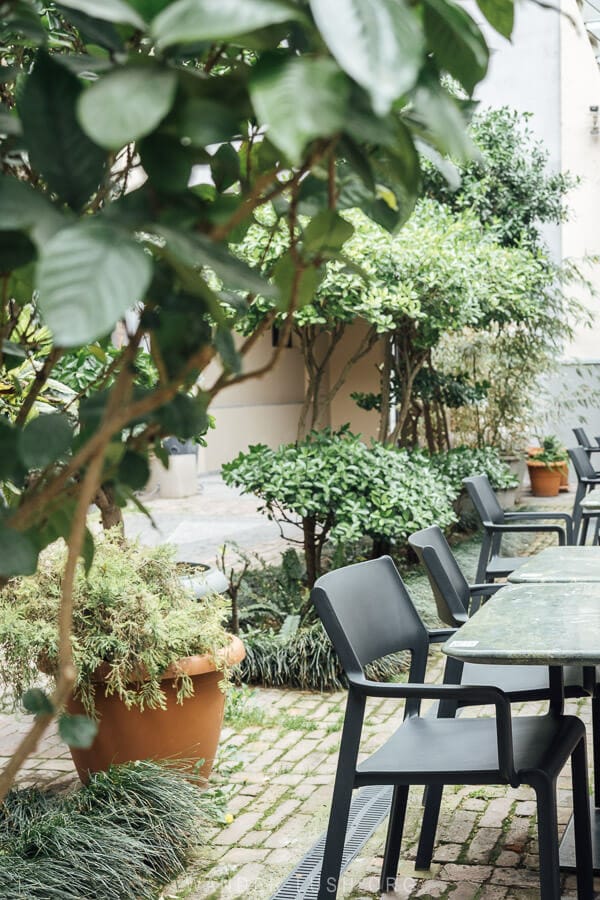
Oro means ‘shadow’ in the Megrelian language, and the restaurant’s sala plays with light and shade to create separate zones. On the expansive main floor, there are sun-kissed tables arranged by big windows. Cosy booth seating is available along one wall, dimly lit for a more intimate feel, and in the back, there are two private dining nooks for groups separated by glazed partitions.
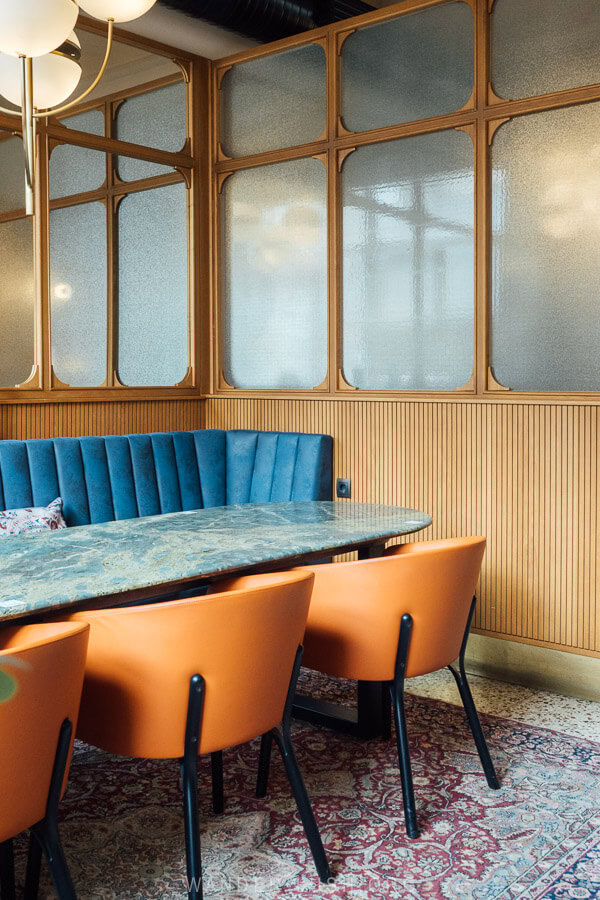

The north-west wall is stamped with geometric patterns that cast shadows onto the textured surface. These symbols are borrowed from the traditional wood carvings found on the balconies of Megrelian oda houses. The reference is subtle but beautiful.


Antique carpets and kilims line the floors, adding warmth by absorbing some of the light that bounces off the lustrous terrazzo floor. A double-doored entry vestibule, pleated cafe curtains and spherical pendant lights add a Deco vibe.
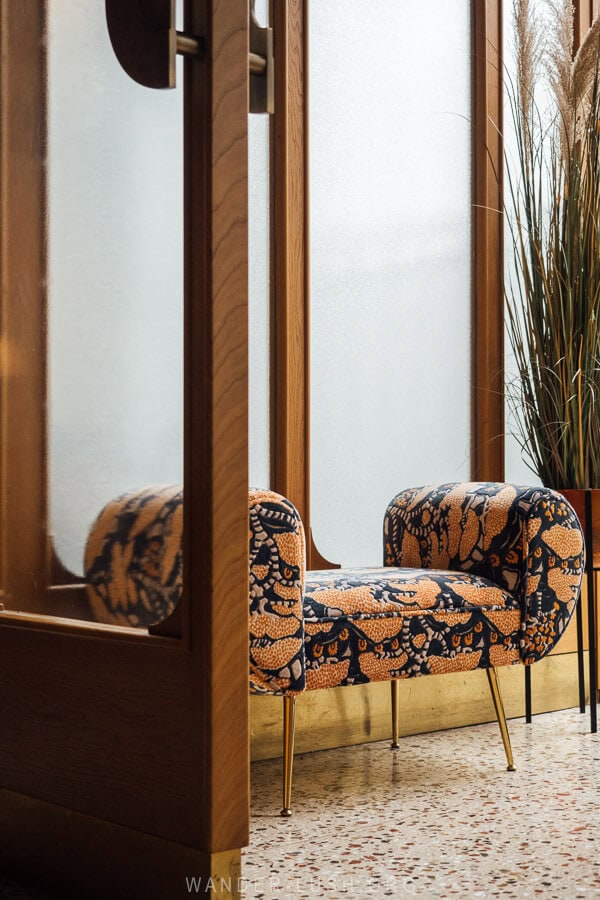
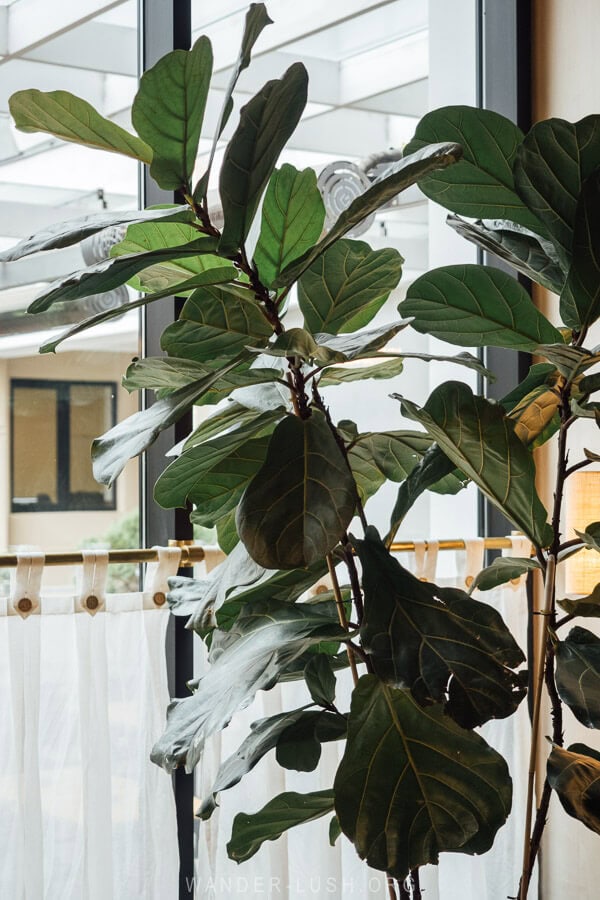
People from Samegrelo are known for being particularly proud of their gardens, so naturally Oro has a nice outdoor space too. The courtyard is heated in winter and sheltered from the summer sun, bounded by rows of leafy plants.
The food
Oro has an abbreviated menu that pairs more obscure Megrelian dishes with Georgian classics that anyone new to the country’s cuisine will be more familiar with. I highly recommend you stick to the regional specialties. Most dishes are meat-based, but there are a dozen vegetarian/vegan options as well. Mains are designed to be shared, and portion sizes are generous across the entire menu.
We started with the crunchy mushrooms with tarragon and garlic, and the homemade sulguni cheese – two starters listed as specialties of the house.
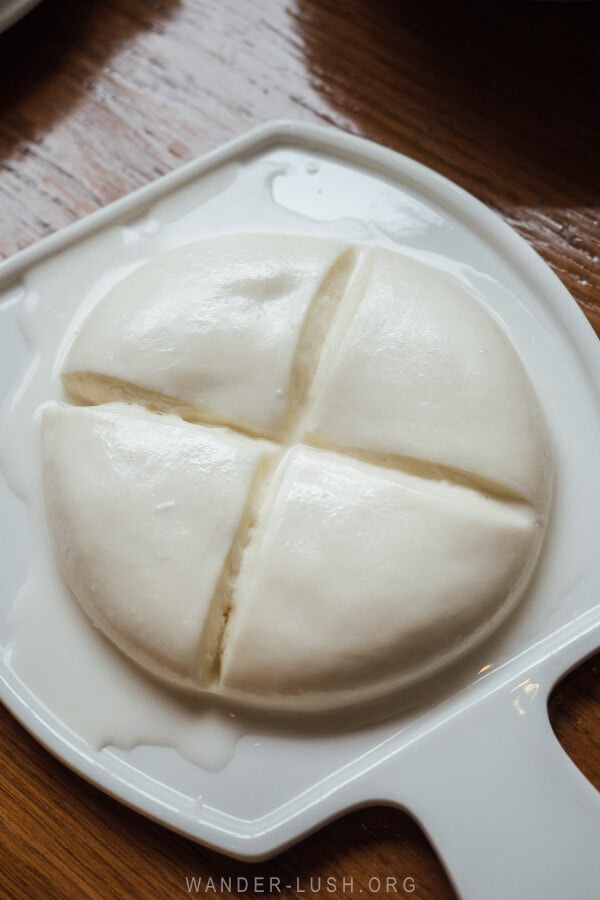
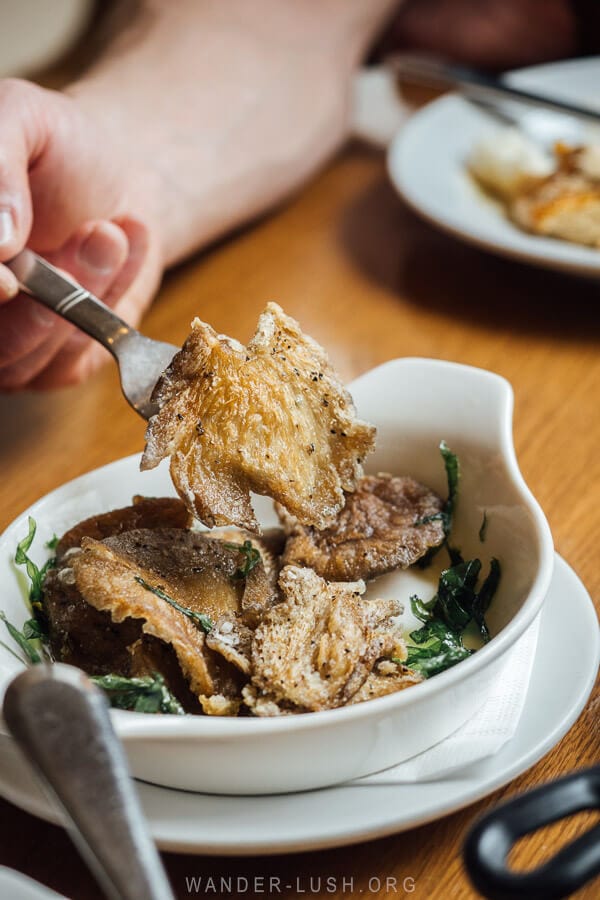
Oro’s mushrooms are honestly one of the most texturally satisfying dishes I have ever eaten. These are not your typical Georgian-style mushrooms that you normally get in a clay pan with cheese – they are wood mushrooms, their caps cut into palm-sized pieces and fried crisp. Perfectly seasoned and with brittle shards of garlic and tarragon on top, they have a tempura-like lightness and are not oily at all. I don’t know the exact inspiration behind this dish – the preparation is unlike anything I have had in Tbilisi before, closer to an Asian-style mushroom but with a clear Georgian slant in the addition of tarragon.
The homemade Samegrelo-style sulguni emerges from the kitchen warm and oozing with whey. As I understand it, Oro had difficulty in sourcing the perfect sulguni, so they decided to make their own inhouse instead. If you haven’t ever tried fresh sulguni before, it has a magical, yielding consistency that slides across your tongue like velvet. Oro’s version is perfectly salted (not too briney, as they sometimes are) and with a mozzarella-like gooeyness in the centre.
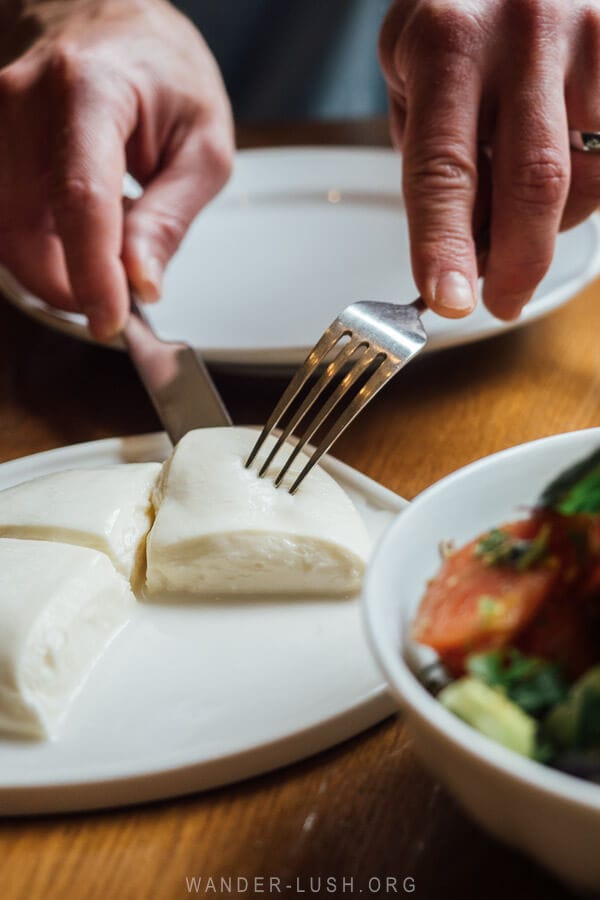
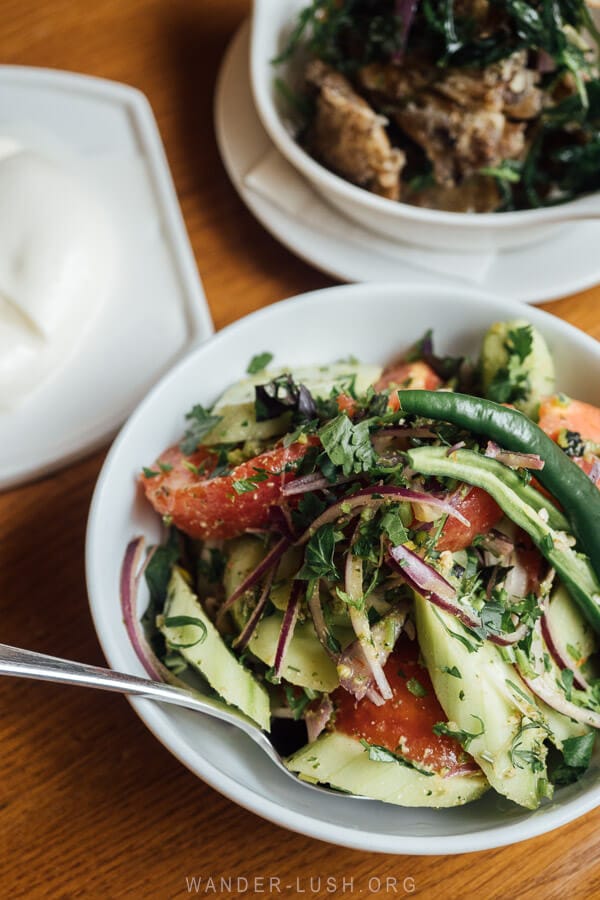
The Megrelian salad takes the classic tomato and cucumber combo to the next level with a hit of green adjika, a subdued version of the spice mix that balances the creamy walnut paste with a gentle warmth.
For mains, we went straight to the Megrelian section of the menu. The roasted chicken in bazhe, a luxurious walnut sauce that is found all over Georgia, is exquisite. Unlike in most restaurants, the chicken is deboned before serving so that it’s easy to eat while still being moist and soft. This is no scrawny village chicken, either: the full-bird portion has a generous amount of white meat. The walnut sauce comes on the side so that you can pour it at the table (or drink it from the saucière – it’s that good!).
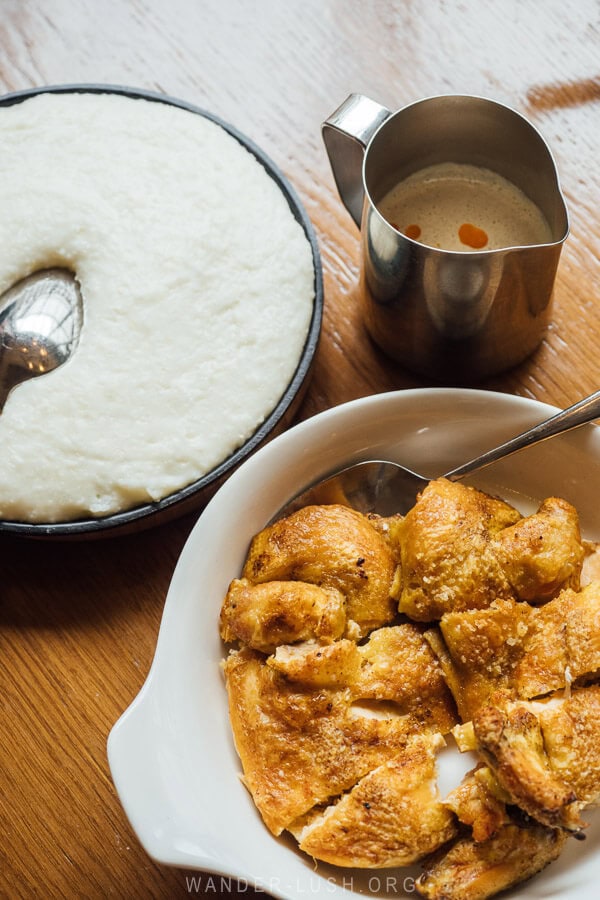

It was difficult for me to turn down one of my favourite dishes, kharcho beef and walnut stew – I am quite sure Oro’s version is sublime. But alas, too much food and not enough time!
I can also recommend the kupati made with offal and adjika, and the kvari, saucer-sized cottage cheese dumplings that are a Megrelian delicacy. I was impressed by both of these dishes on a previous visit.
As a testament to Oro’s reverence for Megrelian cooking, the menu has an entire chapter dedicated to ghomi, a versatile cornmeal side. Choose from ghomi blended with sulguni cheese, melted cheese (elarji) or puchkholia crumbly cheese. On our waiter’s suggestion we opted for the roasted ghomi that has a deep toastiness and is blended with soft sulguni. In Samegrelo, it is customary to hoist up the first spoonful of ghomi to illustrate the stringiness of the cheese. Oro’s passed the pull test – we got a good 30 centimetres of height.
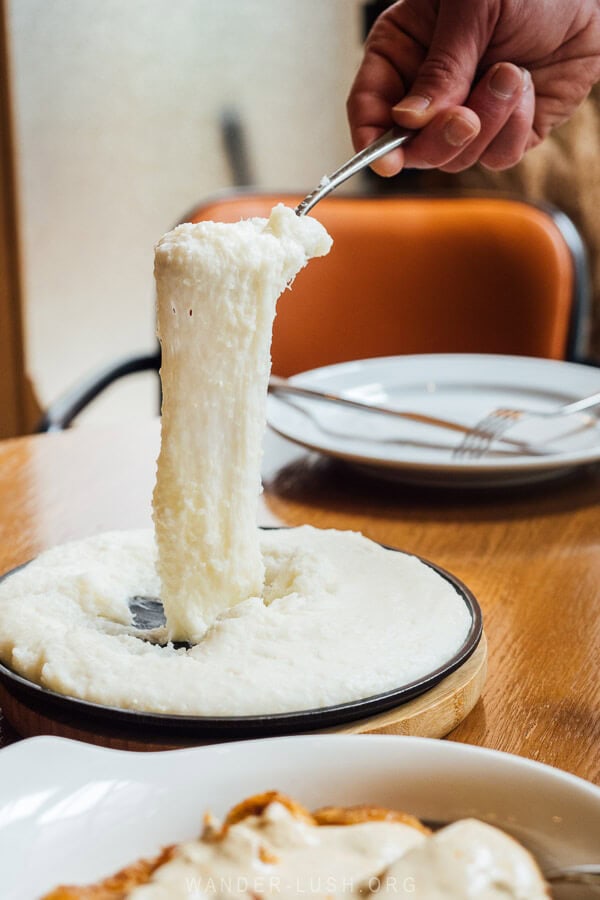

Oro offers standard sides (potatoes mashed or fried; grilled vegetables) and a selection of regional khachapuri. For something on the lighter side, there is a half serving of penovani khachapuri made with flaky pastry – or at the opposite end of the spectrum, the unashamedly extra Megruli khachapuri topped with slices of grilled cheese in addition to the gooey cheese suspended inside the dough.
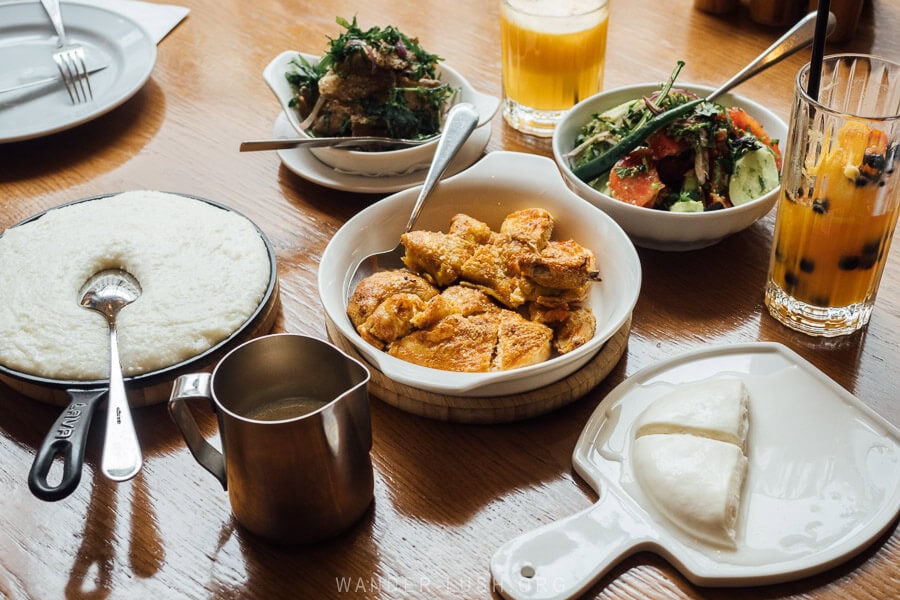
The wine list is quite comprehensive, with dry reds and whites, semi sweets, and a separate section for red and amber qvevri wines. Samegrelo region has a very interesting wine heritage, where vines were traditionally grown on trees (a technique called Maghlari, also practised in Guria and Adjara). I was a bit disappointed to see there are very few Megrelian wines available. There is one ojaleshi (a semi-sweet red that happens to be one of my all-time favourites) from Klimenti Kekutia Estate Vineyards. Otherwise, it is mostly Kakhetian wineries and Imeretian vineyards that are represented.
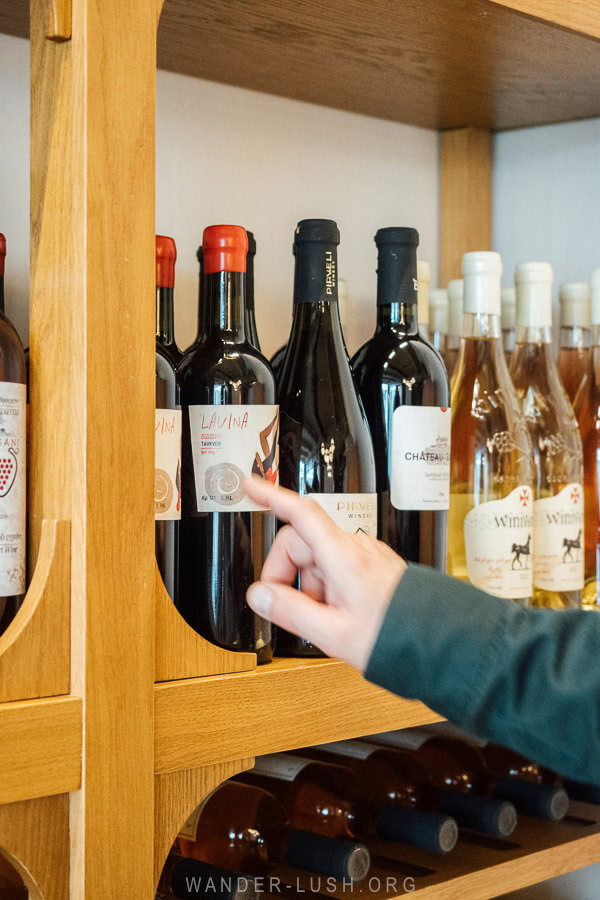
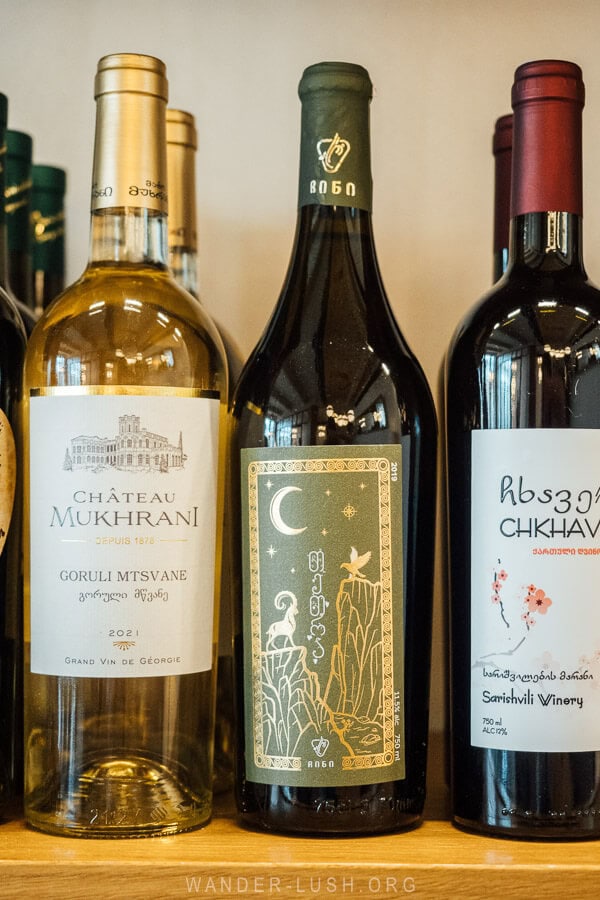
One notable exception is the Chitistvala from Vardzia Terraces. This rare wine comes from a remarkable project by vintner Giorgi Natenadze to restore 24 endangered Meskhetian grape varietals and re-cultivate 400-year-old terraces cut from the Mtkvari River gorge near Vardzia cave city.
The service
Oro places a focused effort on delivering high-quality service, something I really appreciate because it is far from the norm in Georgia as a general rule. A quick glance through the restaurant’s Google reviews confirms that service is a priority here.
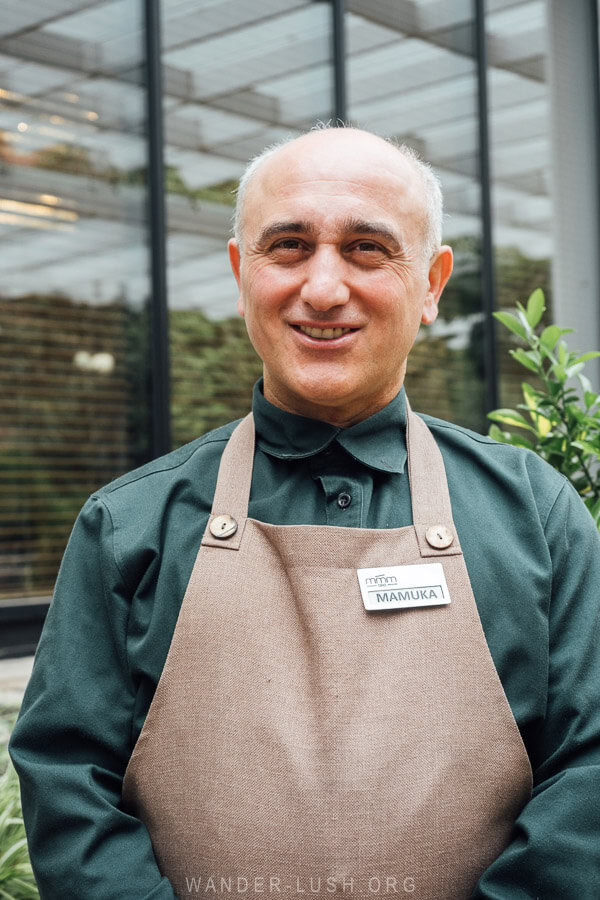
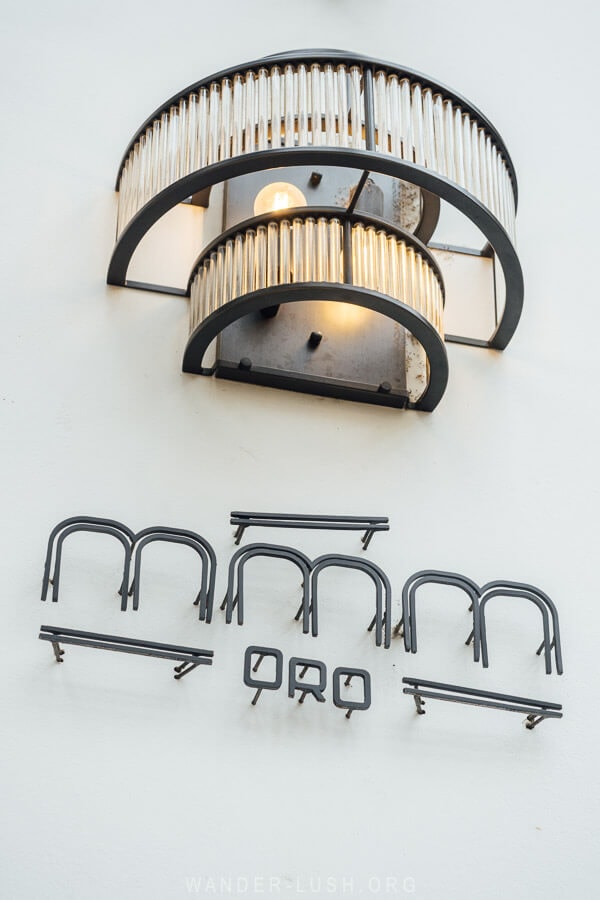
When we arrived, the front of house team was there immediately to greet us. A few members of the team are career wait staff – including the charming Mamuka, who was ready for us with food recommendations and suggested wine pairings. I was quite surprised to find he has an encyclopaedic knowledge of Australian cinema, too!
The details
Oro Marjanishvili is open 7 days for lunch and dinner. Their second location, Oro Sandro Euli, can be found in Saburtalo neighbourhood.



